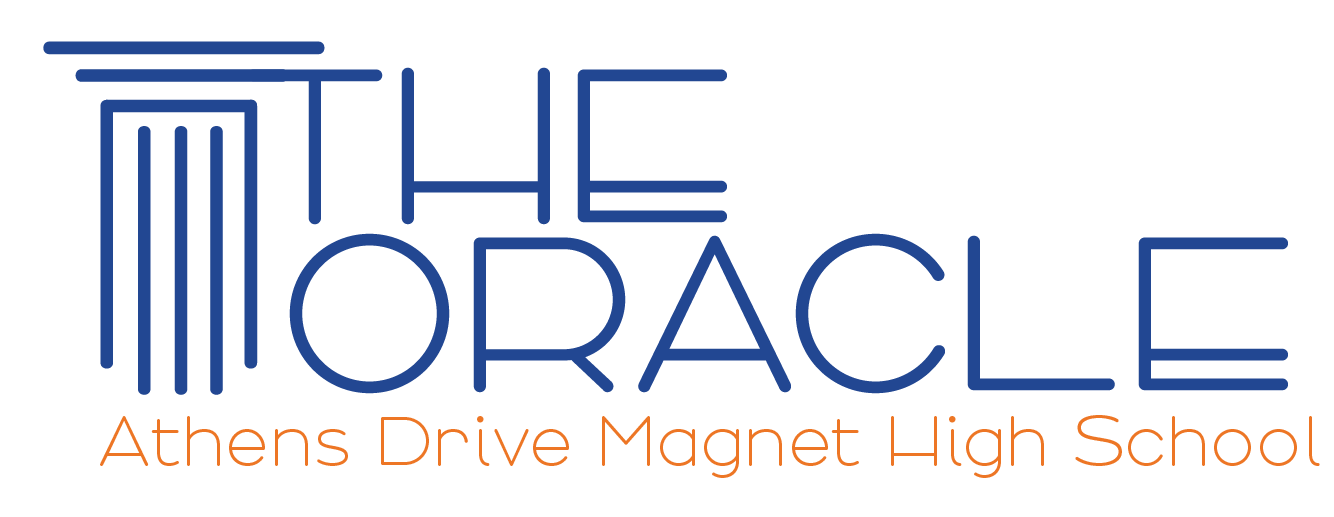As the number of days until graduation dwindle into double digits, many seniors have college on the brain. The application process is for the most part over, but many Athens students wait anxiously to hear from schools across the nation, from Florida State to University of California, Berkeley.
“Some schools are hard to get into because you’re black,” said Jessica Terell, a senior who applied to schools from Asheville to Charlotte. “I would definitely apply outside North Carolina if I felt like I would get accepted,” said Terrell. “A lot of out of state schools don’t accept black people.”
Affirmative action has been an issue of controversy in the United States since its implication in March of 1961, when former President John F. Kennedy signed the bill into action. The “Affirmative Action Bill” required that government employers to not discriminate against any employee or applicant for a job because of race, religion, color or national origin.
The bill was also meant to ensure that employees were treated fairly and equally for the duration of their employment. This executive order was further extended to include women in 1967, addressing the claim that employers could discriminate based on sex. The bill was also meant to ensure equality of education for minorities and prevent segregation from happening in college admissions.
The Supreme Court ruling of Brown V. Board of Education, which ruled segregation of schools to be unconstitutional, was originally responsible for improving education conditions for African Americans. However, according to the National Conference of State Legislatures (NCSL), the percentage of African American undergraduate students remained under 10 percent.
“I look at the racial diversity at schools I consider,” said Terrell. “I like to know what I’m getting myself into.”
Over time, affirmative action policies were increasingly implemented into colleges, higher education facilities, and universities across the country. These policies have influenced a steady increase in minority student enrollment since its placement in schools. In 2011, 65 percent of students enrolled in college were African American, compared to only 56 percent in 2007. However, questions arise about whether or not these policies are still necessary.
“I feel like admissions should consider race when it goes towards people who need aid compared to those who don’t. The same aspect goes towards helping make campuses more diverse,” said William Ojiambo, also a senior.
Many believe that affirmative action is still needed in our schools. According to the National Conference of State Legislatures affirmative action policies have doubled, and sometimes tripled, the number of minority applications to colleges.
“I support affirmative action because when it first started it was a big help to discriminated groups and ensured they would have more opportunities in the workforce,” said Ojiambo.
A common argument against affirmative action is that it is no longer needed in colleges and universities. The NCSL claims that this is not the case for every college and university. Following California’s abolishment of the affirmative action policy, the minority student admissions at UC Berkeley fell 61 percent, and fell 36 percent at UCLA. A similar trend occurred after Texas abolished its policy, leading to 46 percent fewer African American enrollments at Rice University.
“Progress has been made over the years as this policy has been in place and today it is still very relevant to areas where there is not equal access to jobs and colleges for certain demographics,” said Ojiambo.
The American Civil Liberties Union (ACLU) also supports the use of affirmative action in the workforce as well as in schools. According to the U.S. Department of Labor, in 2000 the weekly median earnings for African Americans was 459 dollars, and 395 dollars for Latinos, compared to 590 dollars for white people. This supports the claim that affirmative action is still necessary, and inequality is still a prevalent issue in today’s society.
“When looking at educational, financial and cultural backgrounds everybody is different and they don’t all have the same resources available to them,” said Ojiambo.
According to the U.S. Department of Labor, affirmative action has assisted five million minorities and six million women move up in the workforce. While many claim that affirmative action is no longer necessary in the United States, the U.S. Bureau of the Census in 2010 claimed that women still earn 77 cents to every male dollar.
“Those who come from low-income backgrounds and face hardships like racial profiling should be allowed the same opportunities as people of any other race or background. Society tends to keep people in the same socioeconomic status, we’re not very mobile socially. There’s something wrong with that,” said Connor Leeson, senior.
While affirmative action has helped minority admissions in the past, critics of affirmative action believe its policies are no longer needed in our schools and jobs.
Many others believe that race should not be the only considerations in affirmative actions. Affirmative action focuses on minority groups, but some argue that college preference for students who are considered “legacies,” or the children of alumni from the college or university, is also a large issue in the education system.
A 2013 study found that legacy students were around 23 percent more likely to be admitted into highly selective colleges than students with similar qualifications, regardless of their race.
“I think college admissions should take into consideration something other than race. Race isn’t the only issue when it comes to raising people up because there are plenty of lower class, struggling people who don’t fall into a minority group. They should take social class or income into consideration over just simply race,” said Malakhi Smith, senior.
There are also questions about whether or not affirmative action policies are legal under the Constitution. The Supreme Court will not rule on the matter, leaving it up to the individual states to make decisions on whether or not they keep affirmative action policies.
Some states believe that affirmative action policies are an example of “reverse racism.” In California specifically, during a general election in 1996, voters approved Proposition 209, which made it illegal to discriminate against certain genders or races, ending affirmative action policies in that state.
“There are plenty of successful minorities with children who don’t need the extra help that the struggling families need who aren’t considered a ‘minority’ and ‘race,’” said Smith.
Ultimately, students on both sides of the argument agree that Affirmative Action in some way directly affects their college admission results. Whether or not they agree with the decision often boils down to their ethnicity, family, and economic standing.
“I don’t feel like I have access to the same resources as white people. Anytime that something good comes, white people say that it’s not a big deal. I cherish a lot of what I have because I worked hard for it.” said Terrell.






